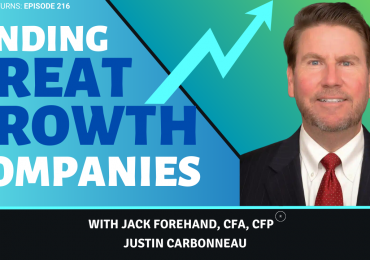In every other issue of my investment newsletter, The Validea Hot List, I look in detail at one of the computerized guru models on run on Validea.com. In this week’s issue, I outlined the strategy from the famous growth oriented investor, Martin Zweig. Below you will find an excerpt from the newsletter along with a handful of top scoring stock ideas based on the Zweig investment strategy.
Taken from the March 6, 2009 issue of The Validea Hot List
If you’ve been a Hot List reader for any significant amount of time, you know that my Guru Strategies have a distinct value bias. The majority of these models — ranging from my Benjamin Graham approach to my Warren Buffett model to my Joseph Piotroski strategy — are focused on finding good, often beaten-down stocks selling at bargain prices; that is, they target value stocks.
But that doesn’t mean that all of my gurus were cemented on the value side of the growth/value pendulum. In fact, the guru we’ll examine today, Martin Zweig, used a methodology that was dominated by earnings-based criteria. He looked at a stock’s earnings from a myriad of angles, wanting to ensure that he was getting stocks that had been producing strong growth over the long haul and even better growth recently — and that their growth was coming from the right sources.
Zweig’s thoroughness paid off. His Zweig Forecast was one of the most highly regarded investment newsletters in the country, ranking number one for risk-adjusted returns during the 15 years that Hulbert Financial Digest monitored it. It produced an impressive 15.9 percent annualized return during that time. Zweig has also managed several mutual funds, and was co-founder of Zweig Dimenna Partners, a multibillion-dollar New York-based firm that has been ranked in the top 15 of Barron’s list of the most successful hedge funds.
Before we delve into Zweig’s strategy, a few words about the man himself. While some of the gurus we’ve looked at in recent Guru Spotights — Buffett and John Neff in particular come to mind — lived modest lifestyles, Zweig put his fortune to use in some pretty fun, flashy ways. He has owned what Forbes reported was the most expensive apartment in New York City, a penthouse atop Manhattan’s Pierre Hotel that was at one time valued at more than $70 million. He’s also an avid collector of a variety of different kinds of memorabilia. The Wall Street Journal has reported that he’s owned such one-of–a-kind items as Buddy Holly’s guitar, the gun from Dirty Harry, the motorcycle from Easy Rider, and Michael Jordan’s jersey from his rookie season with the Chicago Bulls. He even owns the sperm costume from Woody Allen’s film Everything You Always Wanted to Know About Sex. His collecting interests also span the historic (several old stock certificates, including one signed by Commodore Vanderbilt) as well as the nostalgic (like the two old-fashioned gas pumps that are almost identical to those he’d seen at the nearby Mobil station while growing up in Cleveland), Financial World has reported.
Zweig may spend his cash on some flashy, fun items, but the strategy he used to compile that cash was a disciplined, methodical approach. His earnings examination of a firm spanned several categories:
Trend of Earnings: Earnings should be higher in the current quarter than they were a year ago in the same quarter.
Earnings Persistence: Earnings per share should have increased in each year of the past five-year period; EPS should also have grown in each of the past four quarters (vs. the respective year-ago quarters).
Long-Term Growth: EPS should be growing by at least 15 percent over the long term; a growth rate over 30 percent is exceptional.
Earnings Acceleration: EPS growth for the current quarter (vs. the same quarter last year) should be greater than the average growth for the previous three quarters (vs. the respective three quarters from a year ago). EPS growth in the current quarter also should be greater than the long-term growth rate. These criteria made sure that Zweig wasn’t getting in late on a stock that had great long-term growth numbers, but which was coming to the end of its growth run.
While Zweig’s EPS focus certainly puts him on the “growth” side of the growth/value spectrum, his approach was by no means a growth-at-all-costs strategy. Like all of the gurus I follow, he included a key value-based component in his method. He made sure that a stock’s price/earnings ratio was no greater than three times the market average, and no greater than 43, regardless of what the market average was. (He also didn’t like stocks with P/Es less than 5, because they could be indicative of an outright dog that investors were wisely avoiding.)
In addition, Zweig wanted to know that a firm’s earnings growth was sustainable over the long haul. And that meant that the growth was coming primarily from sales — not sost-cutting or other non-sales measures. My Zweig model requires a firm’s revenue growth to be at least 85 percent of EPS growth. If a stock fails that test but its revenues are growing by at least 30 percent a year, it passes, however, since that is still a very strong revenue growth rate.
Like earnings growth, Zweig believed sales growth should be increasing. My model thus requires that a stock’s sales growth for the most recent quarter (vs. the year-ago quarter) to be greater than the previous quarter’s sales growth rate (vs. the year-ago quarter).
Finally, Zweig also wanted to makes sure a firm’s growth wasn’t driven by unsustainable amounts of leverage (a key observation given all that’s happened recently). Realizing that different industries require different debt loads, he looked for stocks whose debt/equity ratios were lower than their industry average.
There’s one more thing you should know about Zweig. He relied a good amount on technical factors to adjust how much of his portfolio he put into stocks. Some of the indicators he used to move in and out of the market included the Federal Reserve’s discount rate; installment debt levels; and the prime rate. His mottos included “Don’t fight the Fed” (meaning investors should be more bullish when interest rates were low or falling) and “Don’t fight the tape” (which related to his practice of getting more bullish or bearish based on market trends).
Those rules are tough for an individual investor to put into practice; Zweig used what he called a “Super Model” that meshed all of his indicators into a system that determined how bullish or bearish he was. But over the years, I’ve found that using only the quantitative, fundamental-based criteria Zweig outlined in his book can produce very strong results. My Zweig-inspired model has been one of my best performers since its July 2003 inception, returning 14.2 percent while the S&P 500 has fallen nearly 29 percent.
The model tends to choose stocks from a variety of areas. Currently, my 10-stock Zweig-based portfolio’s holdings range from retailers to energy firms to healthcare companies to metal miners:
As you might expect with a growth strategy, the Zweig portfolio tends not to hold on to stocks for a long time. Usually it will hold a stock for a few months, though it is not averse to longer periods if the stock continues to be a prospect for more growth.
What I really like about the Zweig strategy is that, while it certainly would qualify as a growth approach, it doesn’t look at growth in a vacuum. As you’ve seen, it examines earnings growth from a variety of angles, making sure that it is strong, improving, and sustainable. In doing so, it allows you to find some fast-growing growth stocks that are not paper tigers, but instead solid prospects for continued long-term success.
Would you like to keep up on the thoughts and ideas from the world’s best investment minds? Fill out our simple sign-up form to receive a weekly summary of the insights from the best and brightest minds in the investment world.










